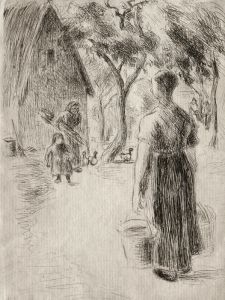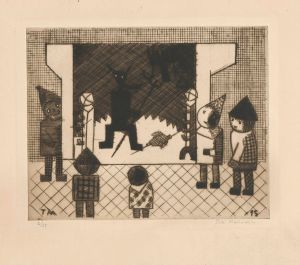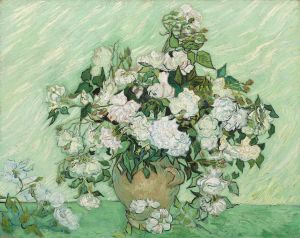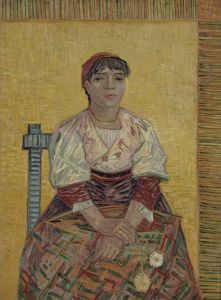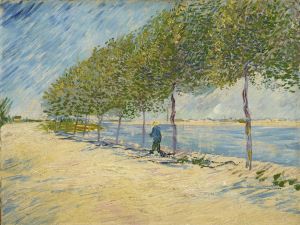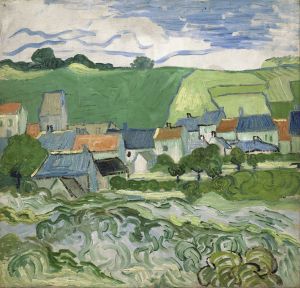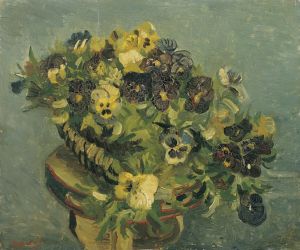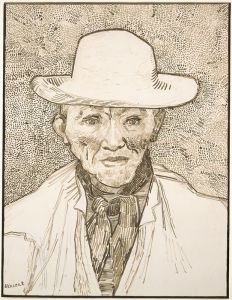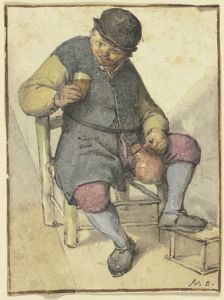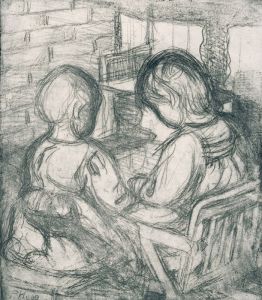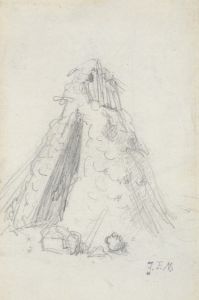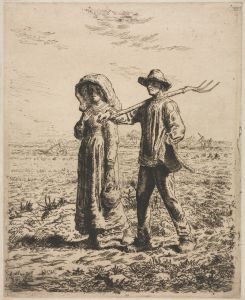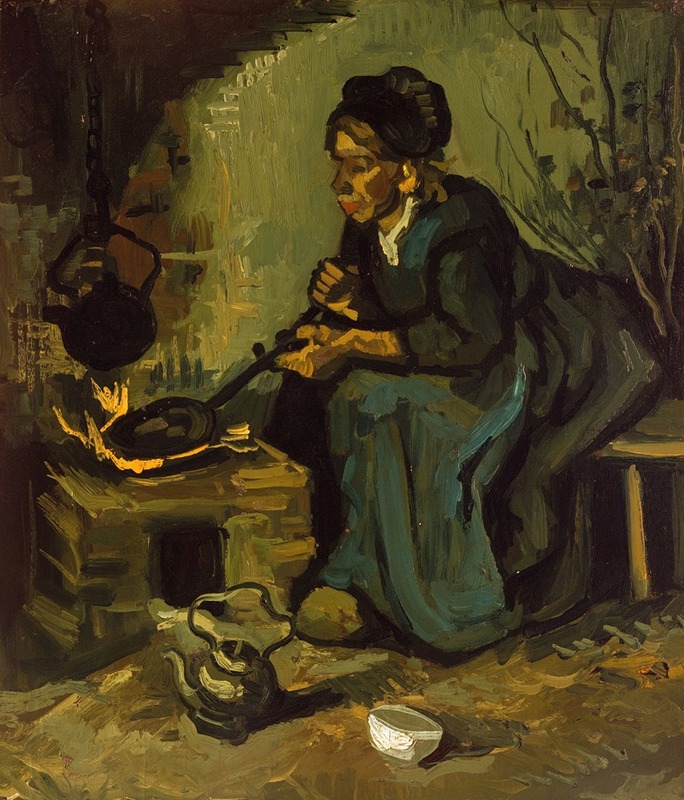
Peasant Woman Cooking by a Fireplace
A hand-painted replica of Vincent van Gogh’s masterpiece Peasant Woman Cooking by a Fireplace, meticulously crafted by professional artists to capture the true essence of the original. Each piece is created with museum-quality canvas and rare mineral pigments, carefully painted by experienced artists with delicate brushstrokes and rich, layered colors to perfectly recreate the texture of the original artwork. Unlike machine-printed reproductions, this hand-painted version brings the painting to life, infused with the artist’s emotions and skill in every stroke. Whether for personal collection or home decoration, it instantly elevates the artistic atmosphere of any space.
"Peasant Woman Cooking by a Fireplace" is an oil painting created by the renowned Dutch artist Vincent van Gogh in 1885. This work is part of Van Gogh's early artistic period, which is characterized by his focus on rural life and the depiction of peasants, a theme that was heavily influenced by his admiration for the works of Jean-François Millet and the social realist movement.
The painting portrays a peasant woman engaged in the act of cooking by a modest fireplace. The setting is simple and unadorned, reflecting the humble living conditions of the rural poor during the late 19th century in the Netherlands. Van Gogh's choice of subject matter highlights his interest in the everyday lives of ordinary people, a recurring theme in his work during this period.
Van Gogh's use of color in "Peasant Woman Cooking by a Fireplace" is notably subdued, with a palette dominated by earthy tones such as browns, grays, and muted greens. This choice of color reflects the somber and harsh realities of peasant life, as well as the dim lighting conditions of the interior setting. The brushwork is vigorous and expressive, a technique that Van Gogh employed to convey the texture and materiality of the scene.
The composition of the painting is intimate, drawing the viewer's attention to the solitary figure of the woman as she tends to her cooking. Her posture and the focused nature of her task suggest a sense of diligence and resilience. Van Gogh's empathetic portrayal of the peasant woman underscores his deep respect and compassion for the working class, whom he saw as embodying the fundamental human virtues of hard work and perseverance.
"Peasant Woman Cooking by a Fireplace" is part of a larger body of work that Van Gogh produced during his time in Nuenen, a village in the southern Netherlands where he lived from 1883 to 1885. This period was crucial in Van Gogh's development as an artist, as he dedicated himself to studying the lives and labors of peasants, often sketching and painting them in their natural environment.
The painting is also significant in the context of Van Gogh's artistic evolution. It demonstrates his early experimentation with form and color, which would later evolve into the more vibrant and dynamic style for which he is best known. While "Peasant Woman Cooking by a Fireplace" may not possess the vivid colors and bold brushstrokes of his later works, it provides valuable insight into the foundational stages of his artistic journey.
Today, "Peasant Woman Cooking by a Fireplace" is recognized as an important example of Van Gogh's early work, reflecting his commitment to portraying the dignity and humanity of the rural poor. The painting is housed in the Van Gogh Museum in Amsterdam, where it continues to be studied and appreciated by art historians and enthusiasts alike for its historical and artistic significance.





